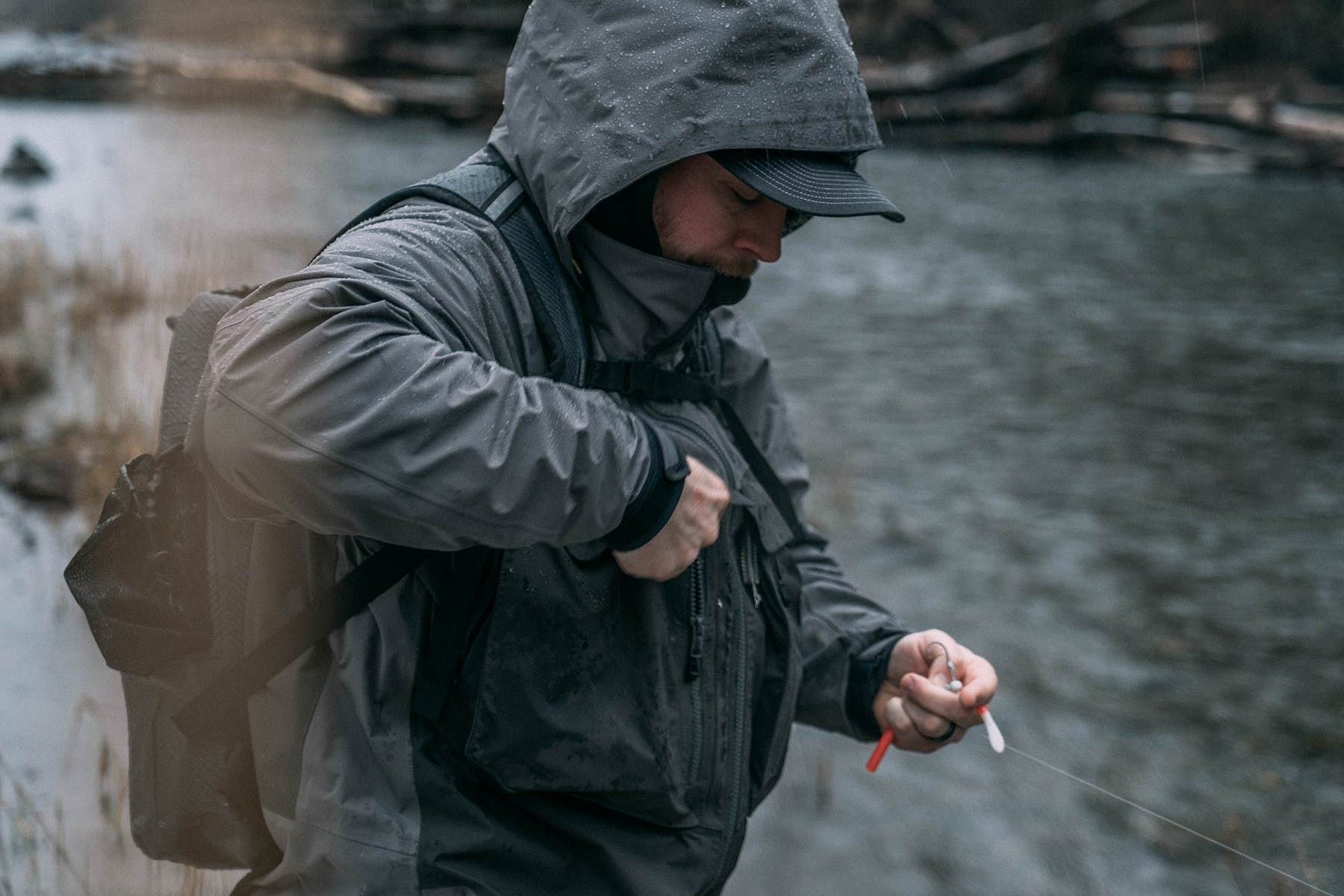Jig Drifting for Fall Steelhead

Some things are simply too good to enjoy only once, and for Marlin Lefever of Addicted Fishing, steelhead rank high on the list.
Offering an appealing blend of fighting form and respectable table fare, steelhead hold a prominent position in the Pacific Northwest’s fall-winter fishing. Cool thing about this fish is that they often have significantly longer lifespans than other anadromous species.
Like their salmon relatives, steelhead travel to the ocean as smolt (juveniles) and then return to the stream of their birth to spawn. The difference is that, steelhead may spawn more than once. Unlike salmon, which die after they spawn, steelhead often return to the ocean for another cycle. This means greater opportunity for anglers who know how to find and engage this amazing fish.
“The steelhead start showing up in mid-November and they’ll last all the way through March,” Lefever said. “We have hatchery fish showing up in the earlier parts of the run from November to early January and then from Mid-January to the end of March or even mid-April, you’re going to have all the wild fish returning to spawn.

"With hatchery fish, the best thing to do is start at the hatchery and work your way down. With wild fish, you’re looking for creek mouths. A lot of these fish are going into tributaries; they’re not spawning in the main river. So if start at the creek mouths, you’re going to do well."
Once in the right area, Lefever stresses the importance of reading water. Specifically, current speed is the key ingredient.
"You basically want a walking speed run, so you want a little disturbance on the water in 3-5 feet deep," he said. "If you can walk next to the run and keep up with the speed of the water, that would be the ideal run to fish."
Finding the right water speed is essential to Lefever’s preferred steelhead presentation, which drifts a jig beneath a float. He starts with a 1/8- to 1/4-ounce Mustad Addicted Sink It Series Jig, which features a single attractor bead and a proprietary fiber tail accented with Mylar and suspends it beneath a Mustad ADX float.
The fixed balsa float includes a surgical tubing segment on the lower end that allows the angler to add or remove weights for the right presentation. Dialing in the right combination of jig size and float weight to match the current is the key to maximizing the fall steelhead opportunities.
"You want your float to present your jig as naturally as possible so a steelhead thinks it’s a bug or nymph or something floating down the river and eats it," Lefever said. "If you have a run that’s too fast, it’s moving too quickly and your jig doesn’t even get down there because the current’s too strong. If you have a run that’s too slow, it’s not really moving and your jig doesn’t get that action to entice the steelhead to bite."
"You want to move your float as little as possible. Steelhead are super-smart fish, so if one sees your jig do something that’s not natural in the current, chances are, he’s not going to bite it."
Most bites will be casual feeding efforts where the fish simply sucks in what it perceives as a meal. Just be ready for the fury that follows — the very reason why steelhead fishing proves so addictive.
"You’re not going to feel anything; you’re just going to see the float drain and you’re going to hammer him and set the hook," Lefever said. "One of the draws of steelhead fishing is their power. When you hook them, a lot of times, they can take a 100-yard run down river before you can stop them. They’re a lot of fun."